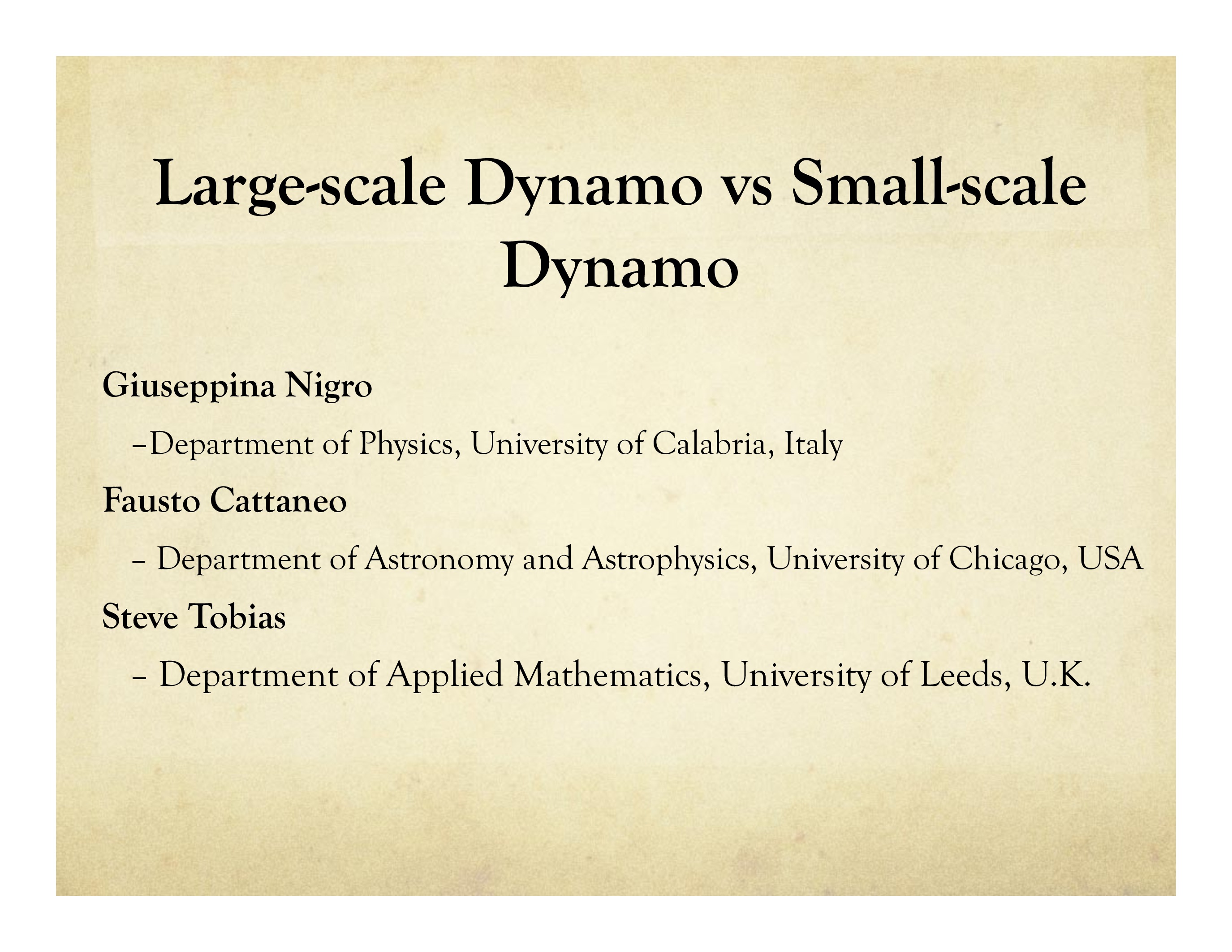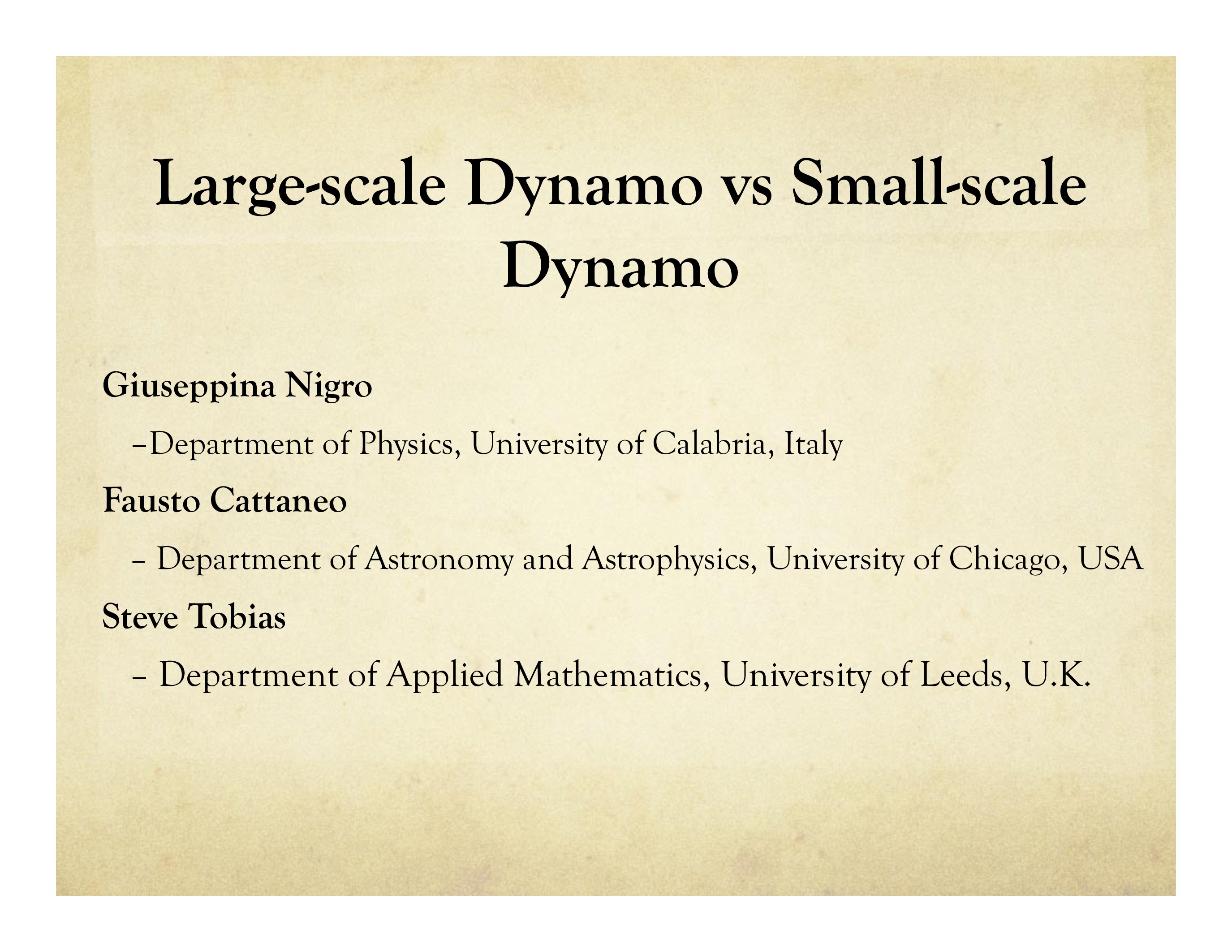Date of upload:
25.11.2019
Co-author:
Fausto Cattaneo, Steve Tobias
Abstract:
Very often the magnetic dynamo reveals itself with a natural tendency of the plasma to self- organize into coherent structures which show characteristic spatial and temporal scales larger than the ones of the underling turbulence. This tendency for self-organization into large structures (typ- ical size of the order of the astrophysical object) has led to the development of the well known large-scale dynamo theory. This theory has represented for more than 50 years an approach com- plementary to the small-scale dynamo theory.
The aim of this contribution is to understand the relationship between dynamo action and large- scale dynamo mechanism, and to question whether or not the two approaches need to be discrimi- nated. The discussion is based on numerical studies of dynamo action in the kinematic regime at high Rm for flows consisting of shear and a helical flow in which the helicity and the strength of the shear can be controlled. The analysis of the numerical results shows that, for some choice of these parameters, the overwhelming small-scale magnetic structures hide the large-scale traveling dynamo waves. This might lead to possible misinterpretation in terms of small-scale dynamo action as a different mechanism than the one generating the large-scale dynamo.

